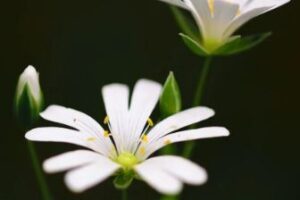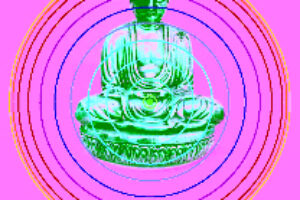
Each year at this time we look back, sometimes with regret; and forward, sometimes with trepidation. Setting aside the intellectual sloppiness, or arbitrariness, of selecting a given time of year to make such an assessment — winter introspection likely being a vestige of our agricultural and tribal heritage — any excuse for taking a time out from the hectic pace of modern life is welcome.
Zen meditation is a top-tier example of such a time-out. Shohaku Okumura Roshi referred to zazen as a “vacation.” Where every other activity is a form of output, zazen is all input, he said. Everything else is work. We are fortunate to have this “excellent method as the essence of the teaching” as Master Dogen puts it. So, if we are making a year’s end inventory of those things for which we are thankful, zazen is certainly near the top of the list.
The Three Treasures of Buddhism — Buddha, Dharma, and Sangha — represent our highest values in Zen. Buddha experience, and its expression as Dharma, are clarified on the cushion in zazen, as is our relationship to the Sangha, the Zen community, if in a more complex mode. We who are part of the Zen community in Atlanta, and its affiliates in a dozen or more locations in the United States, plus a half-dozen or so in Canada, enjoy an especially auspicious situation for which to feel grateful. Buddha and Dharma matter greatly, but Sangha is the social expression, and extension, of our personal practice. Without denigrating the intensely important dimension of studying the self, we must embrace the importance of forgetting the self, particularly through paying attention to others, within the precious Dharma family of Sangha.
Sangha is critically important to the propagation of Zen in America. Community is an increasingly rare commodity in our society. Zen has a history of establishing communities that appear to be antisocial in their reason for being, or at least an alternative to the society in which they appear. Monastic models stand in contrast to lay practice in this regard. We harbor many myths about the history of Zen, wherein the idea of taking refuge in a monastery, in order to get the real experience of Zen, is held up as an ideal. However, lay practice — as recorded in examples of ordinary people, who somehow become extraordinary through their insight into buddhadharma, in spite of the demands of the everyday life of the society of the time — has always held a special place of high regard in the opinion of Zen Ancestors, from Shakyamuni Buddha to Dogen. Our central challenge today is how to support the practice of a modern Sangha, one that is ever-changing, in our volatile and hyper-mobile culture.
In the Silent Thunder Order (STO), the network of priests and disciples who form the effective faculty of our Zen Center affiliates, we think of the Sangha metaphorically as a kind of cloud, after the first Dharma name that Matsuoka Roshi gave me: TaiUn, “Great Cloud.” This “great” simply means “big,” and does not imply a flattering honorific. The Sangha appears to have a shape, much as a cloud in the sky may look like a bunny, or a dragon. But actually, it is ever-changing, shape-shifting, if only a drop of water at a time. The individuals that constitute the Sangha are constantly coming and going, joining and rejoining other communities, Zen or otherwise, like drops of water vapor. The imagined stability of the monastic community evaporates, much like the nuclear family did, following the realignment of returning GIs from World War II.
But you do not practice Zen with the Sangha you wish to have; you practice Zen with the Sangha you actually have, to paraphrase a former SecDef. In a lay-practice Sangha, as represented by STO, for each member, family comes first; followed by career, perhaps; then friends; and finally, Zen community. But Zen does not lose its centrality, in this hierarchy. It is an anchor in the sea of change.
Many years ago, I came across an interview on TV that brought this point home to me with crystal clarity. The interviewee was an architect/engineer who was responsible for the design and implementation of twin skyscrapers in Saudi Arabia, at that time the tallest buildings in the world. Most of the discussion revolved around the ego-centric and power-manic underpinnings of aspiring to be identified with, and financing, the “tallest building in the world.” But at one point the architect made a statement that caught my ear. He said to the interviewer, paraphrasing to the best of memory: “You know, when you add another floor to a building, you don’t put it on top; you have to put it on bottom. It has to support all the other floors of the building.” That is why it is so expensive to build one floor taller than the tallest building. Once exposed to this idea, it seems obvious. But the wisdom of this experienced architect/engineer comes as a breath of fresh air, nurtured in the cauldron of hard experience. It occurred to me that Zen is also like this.
We cannot simply put our Zen practice on top of everything else in our life. If we try to pile Zen on top, it will only add stress to a structure that is already sustaining all the weight that it can handle. Instead, we need to add the “floor” of Zen as an underlayment for our life, so that it supports everything we are already doing, everything that we are already co mmitted to: family, career, friends and creative enterprises. In other words, Zen is not another, separate compartment of activity that takes away from what we are already doing, but is the ultimate complement to whatever we are trying to accomplish.
Your projects are important, as Matsuoka Roshi would often say. This is why musicians, artists, scientists, psychiatrists, engineers, entrepreneurs, innovators, poets, doctors, lawyers and Indian chiefs are finding Zen to be the Way, their way. This Sangha, the community of like-minded people, is not limited to any pre-defined categories of functionality or creativity. Zen is the heart of creativity, and zazen its most central and inspiring method. It will support and enhance whatever you are trying to do.
As we enter into 2015, please exercise all your available options to engage fully in Sangha, the third Treasure, or Gem, of Buddhism. Please treasure each other, forgive each other’s limitations, and encourage each others’ practice. As “members in good sitting” of the STO/ASZC Sangha, we have the great pleasure, and responsibility, of supporting the original Buddhist Order in its manifestation into the 21st Century. It is truly a worthy mission.








